Every Race Track in America Should Copy Lime Rock Park’s Circuit-Within-a-Circuit
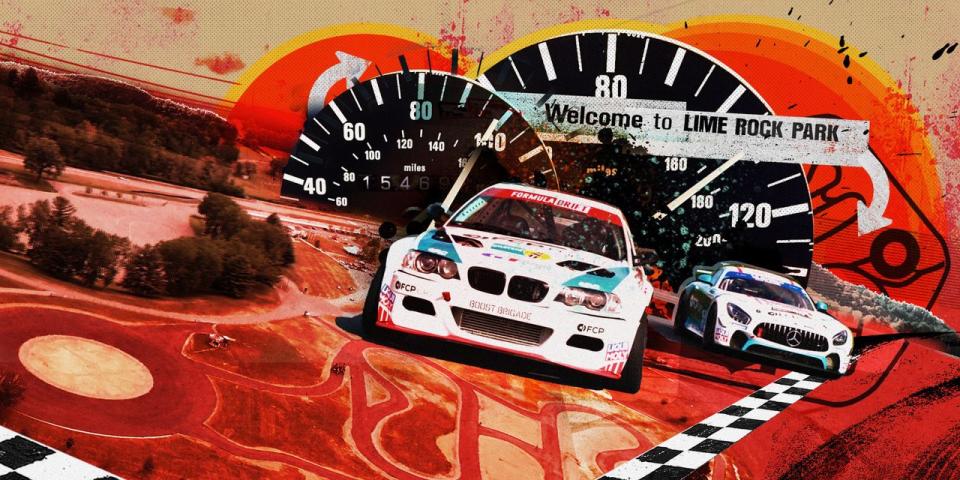
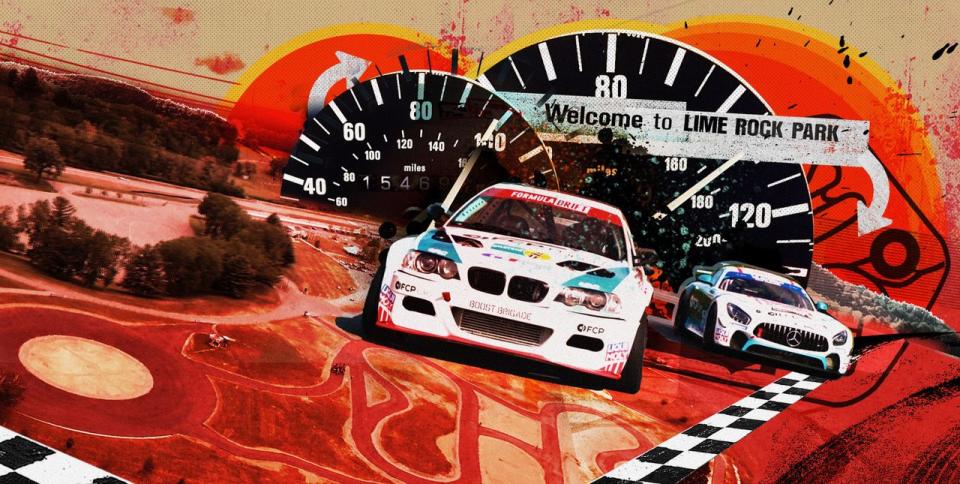
Lime Rock Park is the most exciting place in New England for a car enthusiast. The 1.5-mile main track, tracing the stunning hillsides of northwestern Connecticut, has produced decades of motorsport history and made countless memories for gearheads around the world. It is a major part of Road & Track's annual Hudson Quattrocento rally and an American racing tradition. The first time I ever drove on a race track was at Lime Rock Park, and I’ve done hundreds of laps since. But Lime Rock’s main course isn’t the most fun track in New England. It’s not even the most fun track on the circuit’s property. That title belongs to Lime Rock’s infield course.
Lime Rock’s infield track is a miniature road course that sits tucked on top of one of the many rolling hills that make up Lime Rock’s overall property. Plopped away from the bustling collection of roads, parking areas, and track maintenance buildings scattered within the greater infield, you have to travel up the service road from the main paddock then hang a left towards the bathroom facilities to get there. Once you arrive you’re greeted by a sprawling field of asphalt complimented by a pair of gazebos. A tall tree provides the only other patch of shade. In its longest configuration, the course stretches 0.519 miles, or 35 percent as long as the main track.
The original loop, a tiny 0.223-mile oval with a left-hand kink that is now the southern portion of the full course, was first conceived in 1985 by Terry Earwood, chief instructor for Skip Barber Racing School at the time. The school was headquartered at Lime Rock back then, and the goal was to provide a space to teach students about driving lines and different corners without having to deal with the speeds and risks of going on the full road course. From the track’s beginnings, Earwood kept education in mind.
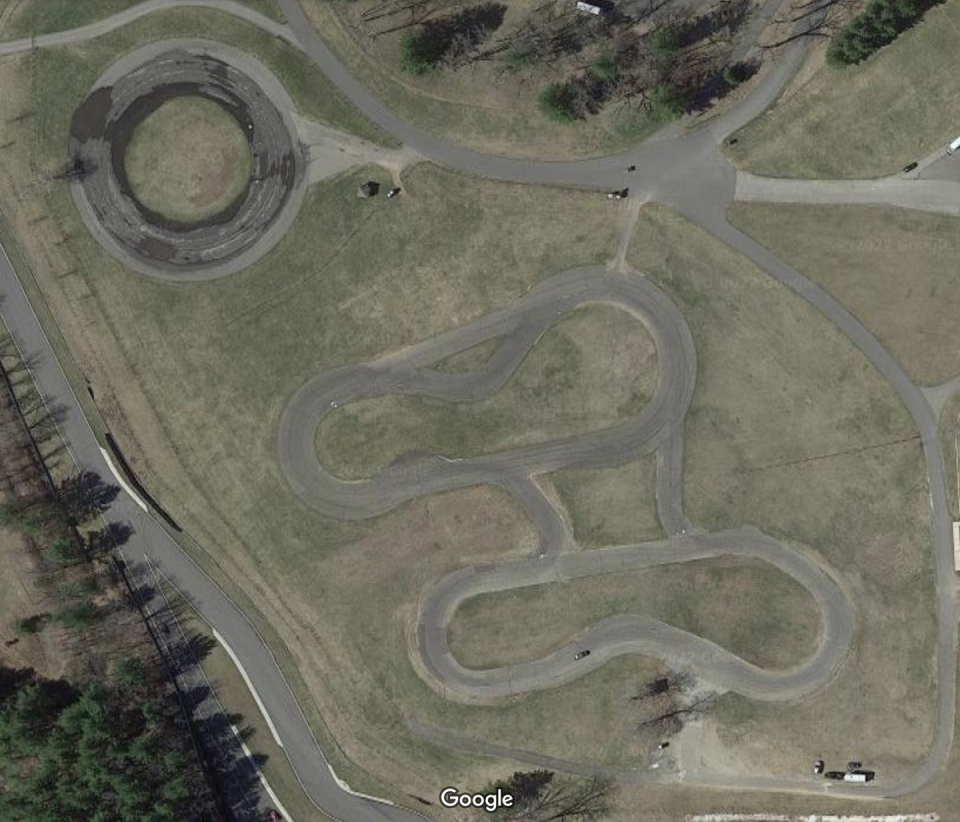
“[The turns] look random, but they aren’t,” Walter Irvine, director of track productions at Lime Rock, told Road & Track. Irvine got his start at Lime Rock back in 1991 as an instructor for Skip Barber’s school before moving to an official position at Lime Rock in 2012.
“They were built specifically to educate drivers as to the proper line through a corner. There are only three types of corners. An increasing radius, a decreasing radius, and a compromise corner.
“There's a definite reason scientifically, if you will, as to how they were put together.”
Between ‘91 and ‘93 a second, northern oval mirroring the original design was added, alongside a pair of tarmac strips connecting the two courses. This allowed instructors to tailor the track’s layout to best suit their teaching. It also allowed the school to introduce elevation change, as the western-most connecting strip features a sharp, steep, uphill left-hander.
Though the infield track is known as an autocross course, it wasn’t until 2012 that Lime Rock formally launched its autocross program. Open to the public, it allows drivers who might not have the funds or equipment necessary to attend a full-on track day to experience a closed course in a safe, fun environment. Unsurprisingly, it was a hit.
“All of a sudden there became this audience for people that couldn't afford to do the road course,” Irvine told us. “We realized it was really important to not only let people do it, but to have some instructors there to coach as little or as much as each of the drivers wanted.”
Every autocross event put on by Lime Rock has instructors on duty to ensure you’re taking the right lines, along with strategically placed cones along the track to mark apexes and turning points, just like a real track day would. Except here, you don’t have to empty out your car, make sure your battery is strapped down, or wear a helmet. You don’t even need a roll bar if your car is a convertible. Programs start at $325 per session, or $550 per session if you jump up to the advanced driver coaching option, which allows half the participants but doubles the amount of instructors present.
It didn’t take long for the autocross program’s appeal to carry into the off-season.
“It was a couple years after I got here that we made a deal and got snow making equipment and snow grooming equipment,” Irvine continued. “We then decided to not close at all during the year. And we made snow. And the same thing applied. We did public days where you could sign up and if the weather was conducive enough for us to not only make and groom the snow, but for the snow to be retained, we did... they were incredibly well received.”
To this day Lime Rock continues to offer a winter autocross program, though the window to run it has been shrinking every year.
“Unfortunately the weather's been getting warmer and warmer so November is the new October, and March is the new April,” Irvine says.
One look at the infield course would lead any enthusiast to believe it would make for a perfect drifting circuit. Plenty of turns, endless layouts, and nothing to hit. It’s a drift pro’s paradise. Alas, the course’s drifting era was short-lived.
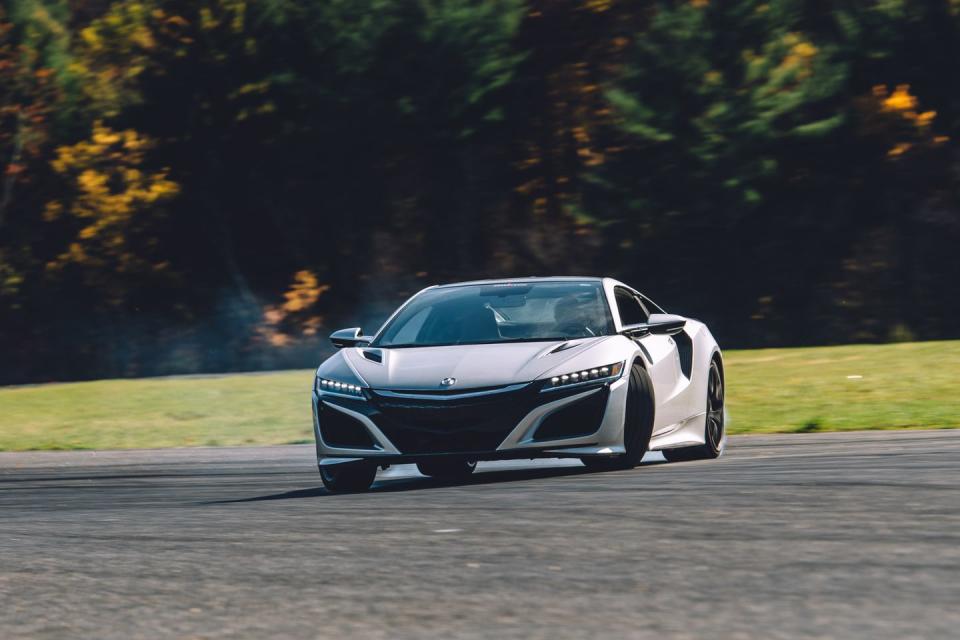
“About five years ago we had three different drifting organizations come out and we beta tested them,” Irvine told Road & Track.
Lime Rock ended up allowing Pennsylvania-based organization Ready Set Drift to run on the course and hold events. The track would even schedule them for days in which unmuffled cars were running on the main track so as not to make the town angry over all of the loud noises drift cars are known to make.
“They were absolutely some of the best renters that I've ever had,” Irvine said. They were wonderful. But when we got into year, I believe it was three or four, Skip [Barber] told me that the town said no more.
“It wasn't the noise because again, we already had a noisy event [going on],” Irvine continued. “We literally had some neighbors, because of the smoke, saying it's carcinogenic. Regardless of whether that was the case or not, it was a heartbreaker for me to have to call [the Ready Set Drift organizers] and tell them that we're not allowed to do it anymore.”
The biggest change to the infield course happened in 2021. A massive 10-year partnership deal with European parts distributor FCP Euro gave Lime Rock the funds to rip up all of the pavement for the first time in 36 years and lay down entirely new asphalt for both the existing course and the skidpad area. Organizers also added roughly a quarter-mile of new asphalt connecting the course to the skidpad, allowing for vastly more configuration possibilities. The deal also resulted in an official name for the infield course: The FCP Euro Proving Grounds.
“The decision was made to reclamate all of the pavement and repave it correctly,” Irvine told us. “I wanted to put the courses back to the original 24 feet. And because they weren't paved linearly or symmetrically one side would be lopsidedly wider off the centerline than the other. So we lost the true line of the corners.
“I was thrilled because we came back in and reestablished the centerline and we paved the 24 feet,” Irvine continued. “As soon as you drove it, you'd go, "Oh my God, this thing is so narrow." And it's supposed to be narrow because it's a discipline.”
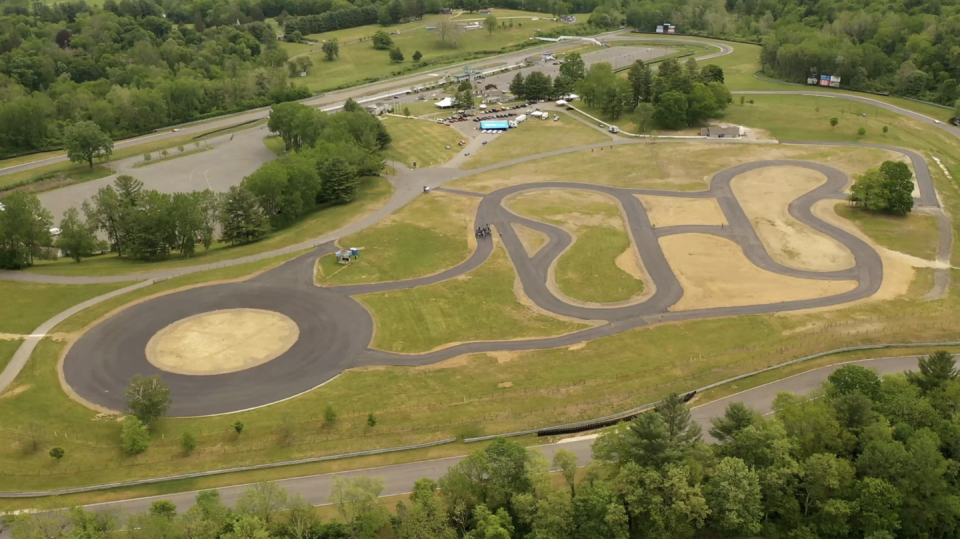
Adding the skidpad to the course also meant some cars would be going fast enough to get into third gear. That meant opportunities for instructors to teach more skillsets, such as threshold braking and downshifting. It also allows the course to give you the sensation of a real race track without so much of the risk involved with full-course driving. You get the speed, a bunch of circuit-inspired turns, and even apex curbing... but without any walls to hit.
The joy of Lime Rock’s infield course comes when you actually attend an autocross program. It doesn’t feel like you’re participating in a traditional autocross. Instead, it’s as if you’re doing a half-length track day. There aren’t any flags to wave or cones to chase after. In some ways, Lime Rock’s autocross course is better than a real track because the speeds are low and there’s absolutely nothing to hit. It’s just you, your car, and a ribbon of smooth asphalt where you can push yourself to the limit without fear of smacking a wall. And while officially sanctioned drifting isn’t allowed, the instructors are more than happy to let you slide your car around the course to your heart’s content.
The world needs more tracks like Lime Rock’s infield course. You don’t have to be a seasoned autocross or track day veteran to get the most out of this place. You just need to show up with your car to have a great time. While it doesn’t allow for stuff like flat-out fourth-gear corners at triple-digit speeds, it scratches the itch for most enthusiasts and encourages beginners to get out there and experiment. In a world where hobbyist driving is becoming rarer every day, places like the infield course are invaluable.
You Might Also Like

 Yahoo Autos
Yahoo Autos 